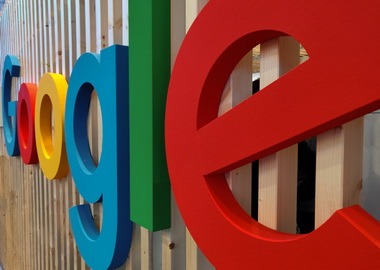Using Google IoT Platform for IoT Project Development
In 2019, Business Insider Intelligence named Amazon Web Services, Microsoft Azure and Google Cloud Platform the three most popular cloud platforms. IoT and big data services provided by these platforms play an important role in this growth as more and more businesses address to IoT platforms to integrate IoT and big data technologies into their processes.
Earlier, we have reviewed the two most popular IoT platforms and learned about the benefits of using AWS for IoT development and the specifics of Microsoft Azure IoT platform. In this article, we’ll top it up with our review of Google Cloud IoT services, platform capabilities and benefits.
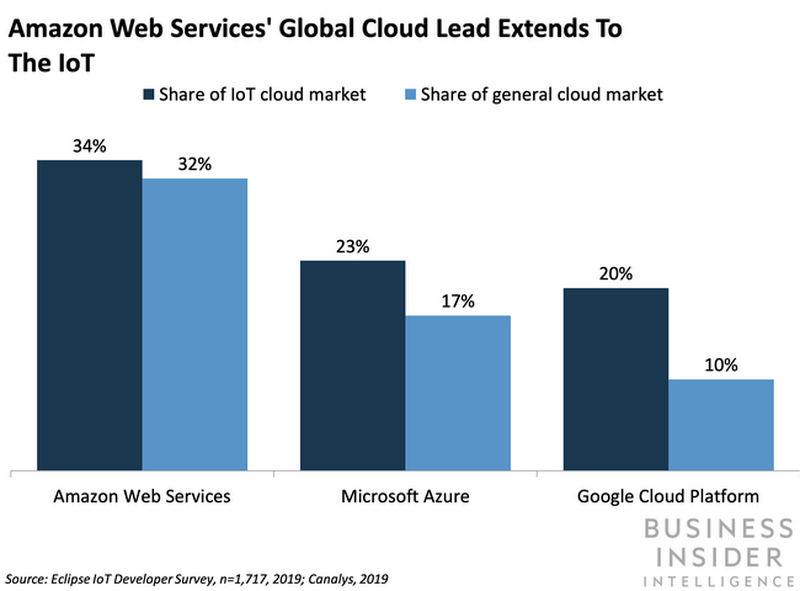
We’ll go through:
- The general overview of Google IoT platform
- Different services of the platform and their capabilities
- The benefits of using Google Platform for IoT and big data projects
By the way, if you are interested in a more detailed insight on various IoT platforms, you can contact our IoT expert team. We’ll analyze your requirements and help you find the right IoT platform for your project.
General overview of Google Cloud IoT
Even though it stands third in the list of IoT platforms, Google Cloud IoT is a versatile and well-packed platform that helps businesses develop and deploy IoT and big data applications quickly and hassle-free.
Relying on the platform’s rich toolset, ready-to-use software and cloud services, you can create an IoT application and integrate it into your business process without building a complex infrastructure on your side. Instead, you can put all the responsibility for device management, computing, storage, processing and security on the services of Google Cloud IoT platform.
The platform’s services are fully-managed, which means that Google deals with all the scale-ups and downs on its own and business doesn’t need to worry if its system or volume of data to process grows significantly and requires more resources.
Now a few more words about the services themselves.
Google Cloud Platform Services
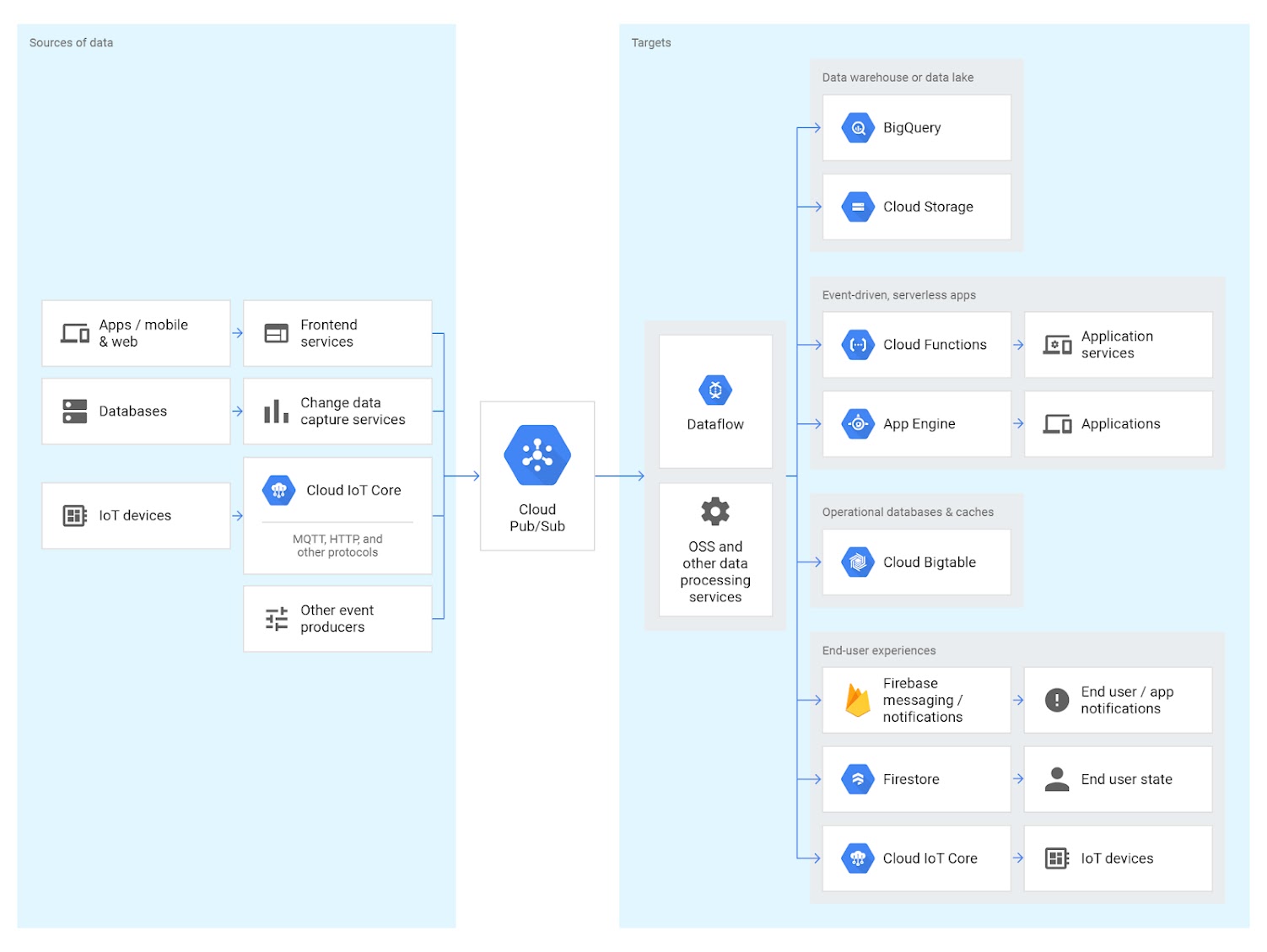
Image credit: Google Cloud
As we mentioned earlier, Google Internet of Things services are versatile and have a lot to offer for the development of every layer of an IoT system. The platform’s tools enable device deployment, communication and management, end-to-end security, comprehensive edge and cloud intelligence, and more.
Google IoT Core is the central service of the platform that allows establishing two-way communication between end devices with each other and the cloud via MQTT and HTTP protocols. Using this service, for example, you can connect your sensors with the gateway or directly to the cloud, collect metrics and act on the collected data in real time.
Google IoT Core includes a communication broker and device manager. The first enables global access to IoT data from end devices, while the second allows deploying, configuring, updating and controlling devices.
Cloud Pub/Sub service works together with Google IoT Core as a device messaging service. It gathers event data globally (the area doesn’t matter) and routs it further for processing and analytics, allowing temporary 7-day data storage. It is HIPAA-compliant, provides end-to-end encryption for data transferring and multilevel access permission.
Pub/Sub can route data to other Google IoT Cloud services for initial data processing. For example, data sent to Cloud Functions can trigger some actions on the device side. When transferred to Dataflow streaming and analytics service, raw device data can be filtered, reformated, sorted, enriched with metadata, redirected to other services for storage and analytics.
When it comes to storage and analytics on the Google Cloud platform, here comes a great variety of tools, services, APIs and other instruments not specifically focused on IoT but widely used to develop connected systems. Among the most popular products for IoT development will be:
- BigTable. This is a NoSQL data storage service that can handle any amount of data and is able to scale up on demand without any specific effort on the user side.
- BigQuery. This is a cloud data warehouse solution that allows to quickly and effortlessly get both real-time and predictive insights from big data.
- Cloud Machine Learning Engine. With Google Cloud Platform, IoT solutions can be enhanced with top-notch machine intelligence. Powered by open-source Tensorflow, Cloud Machine Learning Engine allows developers to train their machine learning models with the grand resources of Google and run these models both at the edge and on the cloud.
Apart from data management, analytics and storage, Google Cloud Platform offers services for data visualization and presentation. Here come out-of-the-box Google Data Studio to help you visualize BigQuery data in an intuitive way, and Datalab for building custom data analytics models and visualizations using object-oriented languages like Python and JavaScript.
Read: 5 keys to effective UX design for IoT development.
This is by far not an exclusive list of Google Cloud Platform services, however, these are the commonly used ones for building smart systems. Now a few words about the benefits of using Google Cloud Platform for IoT development.
Benefits of Google Cloud Platform for IoT
As we have noted several times, in general, Google Cloud platform offers a range of fully-managed services for developing scalable IoT systems. Google also provides serious security means like encryption and granulated access control to data resources. It solves one of the biggest challenges in IoT development — security. As other popular platforms, Google Cloud IoT also offers numerous developer tools and IoT prototyping kits from trusted hardware providers.
Apart from these common benefits of Google Cloud services, the platform for Internet of Things app development offers unique benefits.
Add location intelligence
One of the biggest perks of working with Google is having easy access to amazing Google resources. Among them is Google Maps which you can integrate as a part of location intelligence into your IoT applications.
Read: Why integrating an IoT smart parking system to city infrastructure
Explore the capabilities of machine intelligence
Among the reasons to choose Google IoT development platform is the rich AI resources and tools for adding machine intelligence to digital systems. It’s no secret that data-intensive IoT applications win a lot from using machine learning and other AI technologies. With Google services, it becomes easier and more cost-efficient to integrate machine intelligence into your applications.
We have already mentioned Google Machine Learning Engine, but there’s much, much more than that. You can see the broad range of Google AI Platform tools and services here.
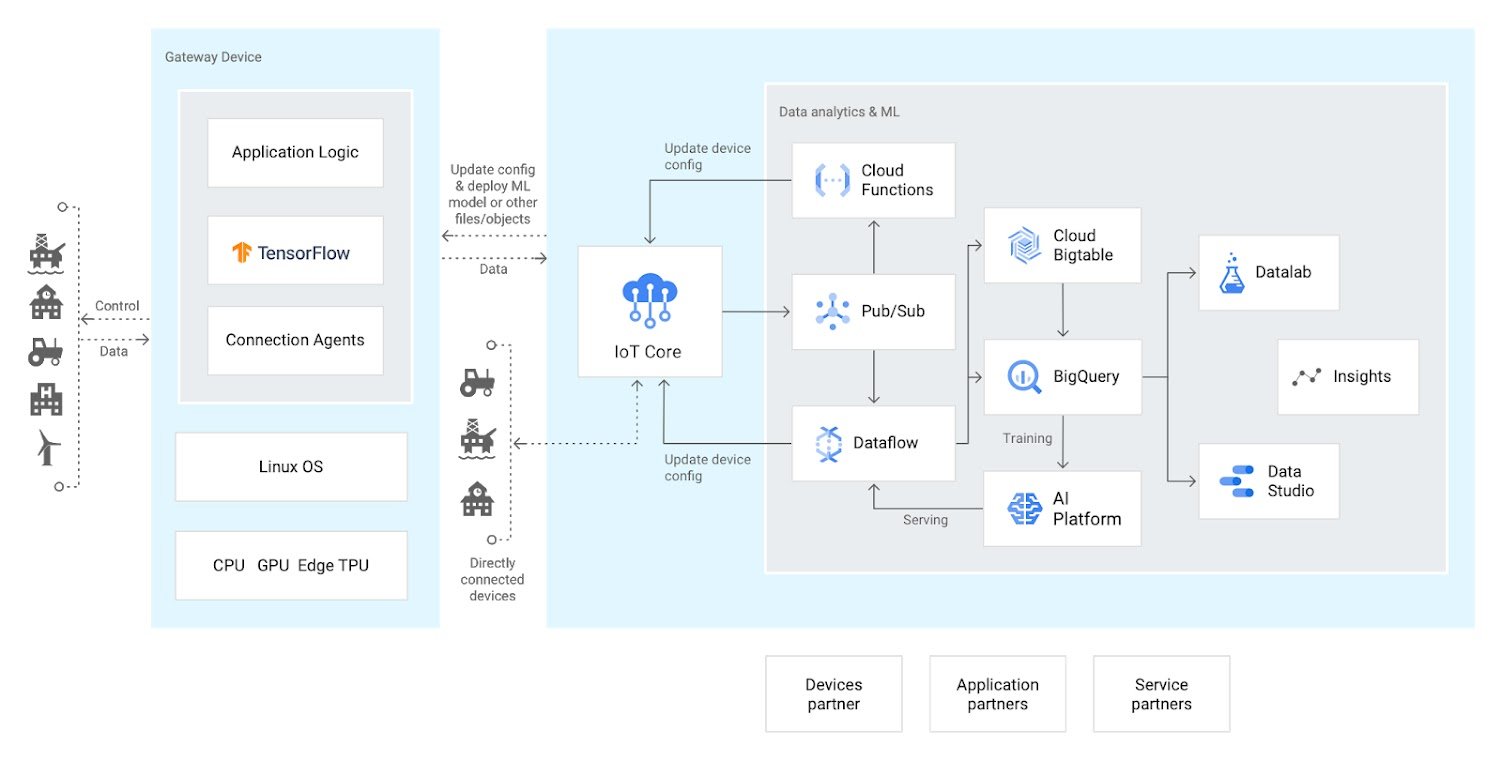
Image credit: Google Cloud
Connect to Android Things
As of 2019, connecting to Android Things devices to IoT Core service became even easier thanks to the Android Things plugin.
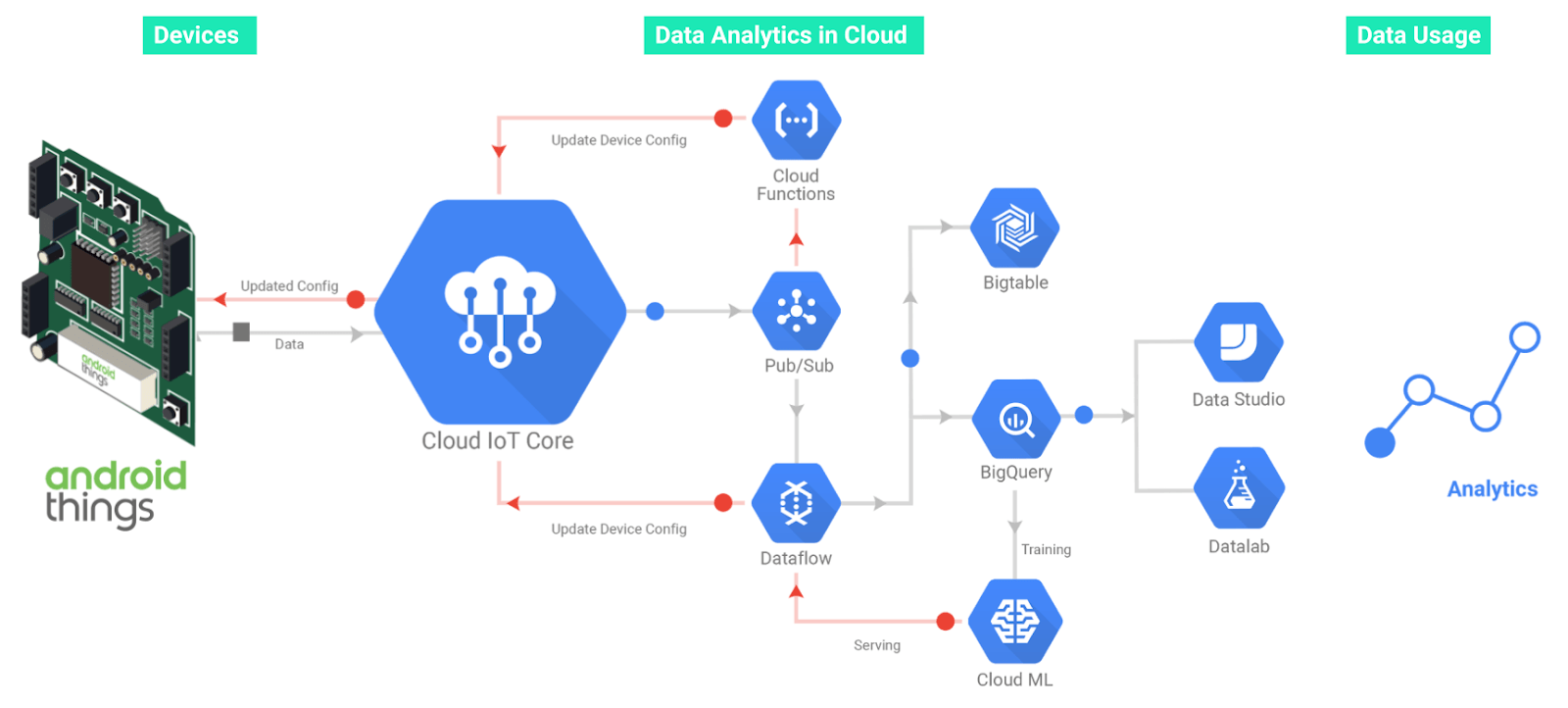
Image credit: Google Developers Blog
Are you interested in learning more about the benefits of using platforms like Google and IoT services they provide? Or already working on an IoT system and need an experienced and skilled team to help your design and build an IoT application? Contact Digiteum team to discuss your project requirements and goals. We have rich experience in building digital systems that change people’s lives and optimize business processes in different areas from energy to healthcare and education.


